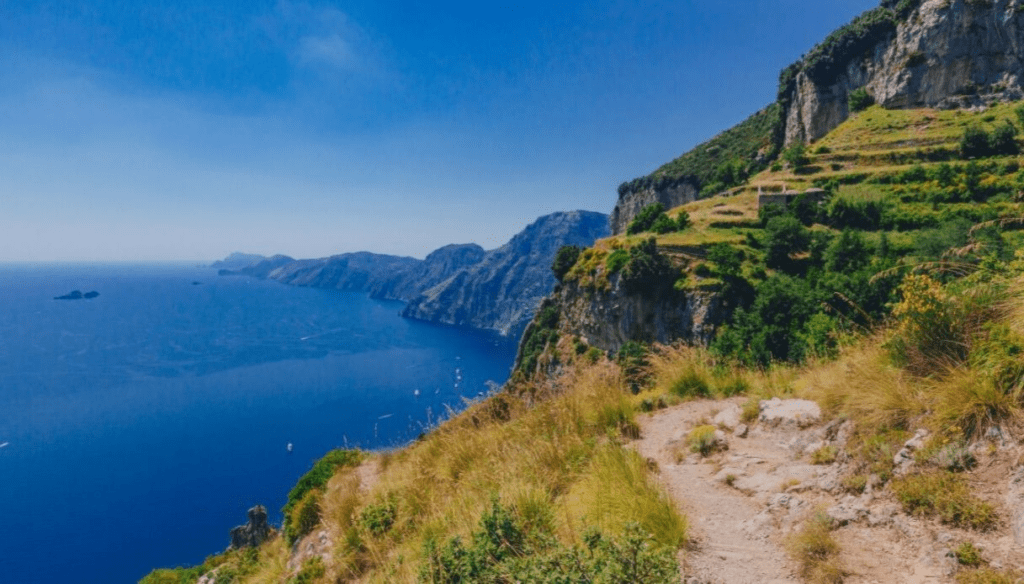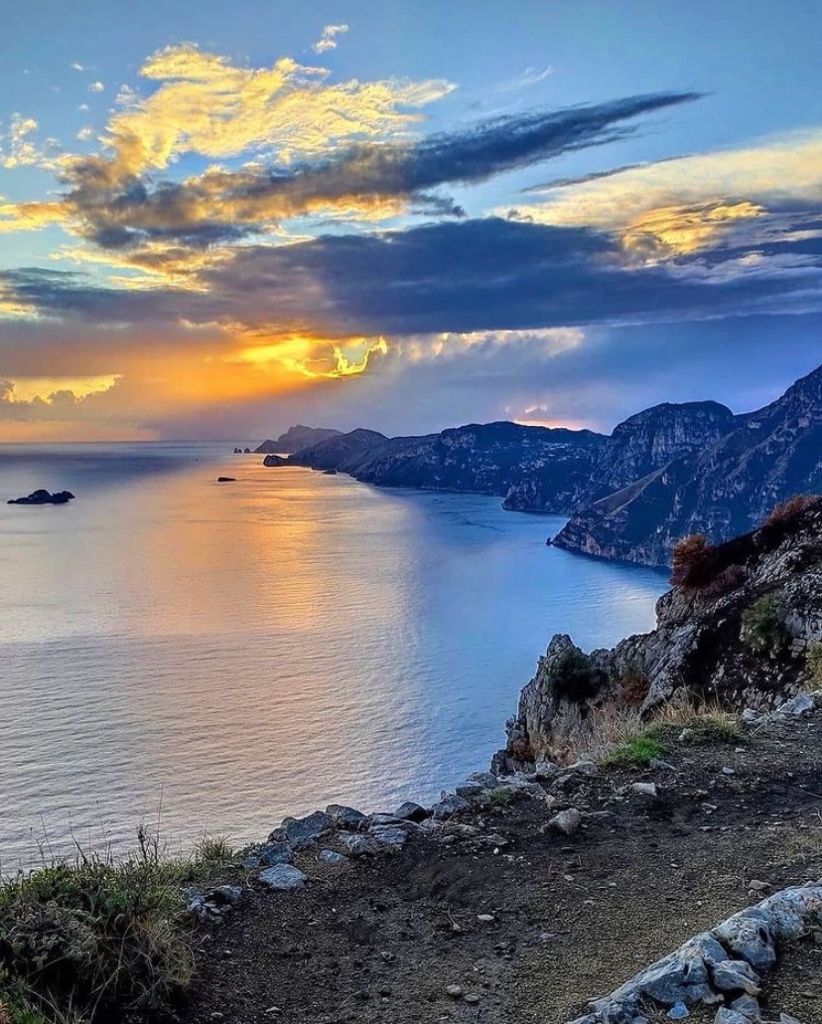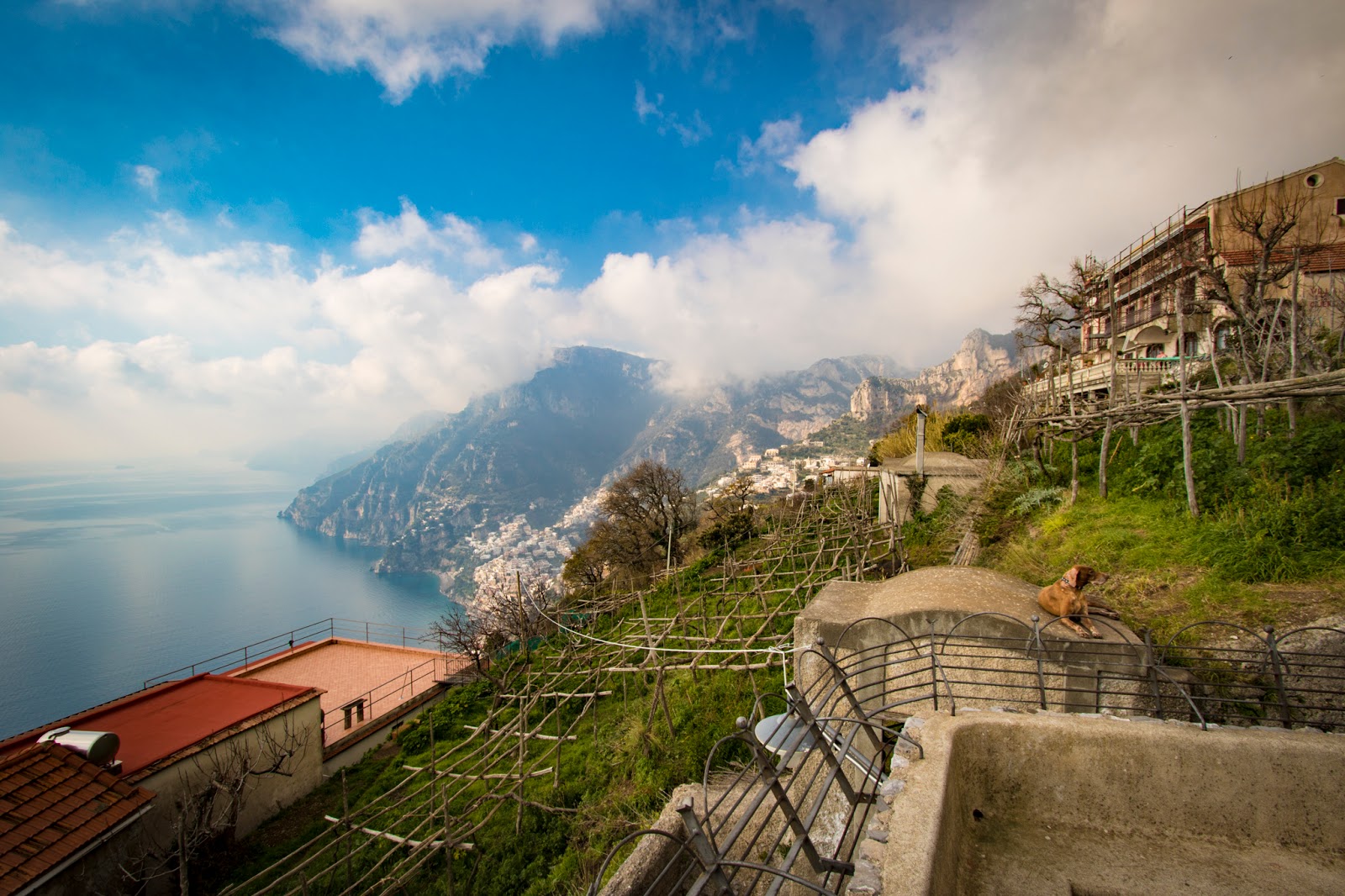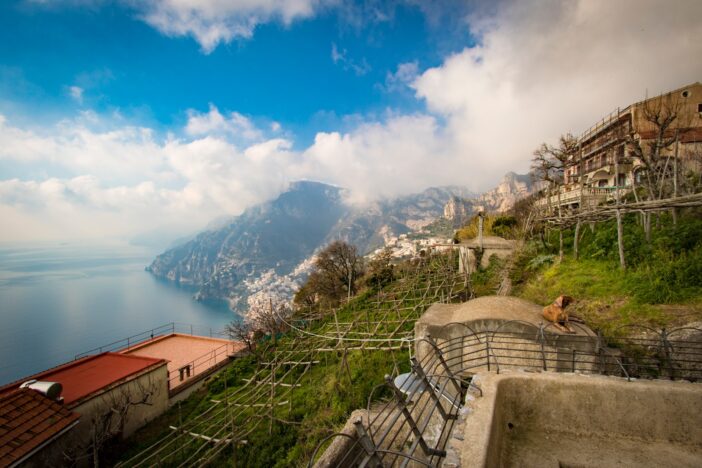The Amalfi Coast, a UNESCO World Heritage site, is renowned for its breathtaking landscapes, picturesque villages, and rich cultural heritage. Stretching approximately 50 kilometers along the southern coast of Italy, this region offers an unforgettable hiking experience for both novice and experienced hikers. The famous Sentiero degli Dei, or Path of the Gods, is the most celebrated hiking trail on the Amalfi Coast, offering stunning views, diverse landscapes, and a chance to immerse oneself in the local culture.
Overview of the Amalfi Coast
The Amalfi Coast is characterized by steep cliffs, vibrant villages, and terraced vineyards overlooking the Tyrrhenian Sea. The coastline is dotted with charming towns, including Positano, Amalfi, Ravello, and Praiano, each with its unique character and attractions. The region’s Mediterranean climate makes it an ideal destination for hiking, especially during the spring and fall when temperatures are mild, and the landscape is lush.
The Amalfi Coast Hiking Route
The Path of the Gods (Sentiero degli Dei)
The Path of the Gods is a stunning hiking route that connects the towns of Bomerano and Nocelle, offering breathtaking views of the Amalfi Coast and the surrounding countryside. The trail is approximately 8 kilometers (5 miles) long and typically takes 2 to 4 hours to complete, depending on your pace and the time you spend taking in the scenery.

Route Details
- Starting Point: The hike begins in Bomerano, a small village in the hills above Praiano.
- Trail Markings: The trail is well-marked with white and red signs, making it easy to follow. Keep an eye out for markers as you hike.
- Terrain: The path consists of rocky trails, gravel, and some steep sections. Hikers should be prepared for uneven surfaces, particularly in some parts of the trail.
Key Highlights Along the Route
Key Highlights Along the Path of the Gods
- Breathtaking Views:
- As you traverse the Path of the Gods, the views become progressively more stunning. The trail offers panoramic vistas of the Amalfi Coast’s dramatic cliffs and the azure Tyrrhenian Sea. At various points along the route, hikers can pause at viewpoints equipped with benches and signs that explain the geography and history of the area.
- Look out for vantage points like the Belvedere di Nocelle, where you can see the iconic Positano clinging to the cliffside and the vastness of the sea stretching out to the horizon. Early morning hikes provide the added benefit of soft, golden light illuminating the landscape, perfect for photography.
- Flora and Fauna:
- The Amalfi Coast is a biodiversity hotspot, and the Path of the Gods is no exception. The trail is flanked by lush vegetation, including Mediterranean maquis, wild herbs like oregano and rosemary, and vibrant wildflowers in the spring.
- Hikers may also spot various bird species, such as the peregrine falcon or the blue rock thrush, which are native to the area. If you’re lucky, you might even see the rare Apennine chamois, a type of goat that roams the rugged cliffs.
- Historical Sites:
- The path is steeped in history, with remnants from ancient agricultural practices and old hermitages. You can find ancient terraced fields that were used for cultivating crops like grapes and olives, showcasing the region’s agricultural heritage.
- Keep an eye out for the Chiesa di Santa Maria a Castro, a small chapel along the trail. Its historical architecture and serene surroundings offer a moment of reflection and appreciation for the spirituality of the landscape. The chapel is a popular spot for hikers to pause and take in the beauty of the area.

- Local Culture:
- One of the joys of hiking the Path of the Gods is the opportunity to connect with local culture. The trail passes through small villages and farmlands, where locals tend to their gardens and orchards.
- Many of these locals are happy to share their knowledge about traditional farming practices and the unique products of the region, such as the famed Amalfi lemons. Look for roadside stands selling homemade limoncello, olive oil, and other local delicacies. These interactions add a personal touch to your hiking experience.
- Nocelle:
- The village of Nocelle is a delightful endpoint for the hike, offering a glimpse into authentic rural life on the Amalfi Coast. Perched high above Positano, this charming village features narrow streets, colorful houses, and stunning views.
- Once you arrive in Nocelle, consider visiting the Chiesa di San Giacomo, a beautiful church with historical significance. It’s also a great place to take a break and enjoy a meal at a local trattoria, where you can sample traditional dishes like gnocchi alla sorrentina or spaghetti alle vongole. Don’t forget to try the local limoncello, made from the famous Sfusato Amalfitano lemons, known for their unique flavor.
Highlights of Alternative Hiking Routes
- Valle delle Ferriere:
- This trail is a hidden gem that takes you through a lush valley filled with waterfalls and abundant vegetation. The sound of rushing water accompanies you as you hike, adding to the tranquil atmosphere.
- As you walk through the valley, you’ll encounter ruins of ancient paper mills, where paper was produced using water-powered machinery. The remains of these historical sites tell the story of the region’s industrial past. Be sure to explore the area near the waterfall at the end of the trail, where you can take a refreshing dip in the natural pools.
- Sentiero dei Limoni (Path of the Lemons):
- This relatively easy hike takes you through fragrant lemon groves, showcasing the agricultural practices that have defined the Amalfi Coast for centuries. The trail meanders between the towns of Maiori and Minori, offering scenic views of the coastline and the terraced fields.
- Along the way, you can learn about the cultivation of lemons and how they’re transformed into famous products like limoncello and lemon marmalade. Many local farms welcome visitors for tastings and tours, providing insight into the importance of this fruit to the region’s economy and culture.
- Monte Tre Calli:
- This hike is a bit more challenging but rewards you with spectacular panoramic views from the summit. As you ascend, the landscape changes from lush Mediterranean vegetation to rocky outcrops, providing a different perspective on the Amalfi Coast.
- The summit offers a breathtaking view of both the Amalfi Coast and the Lattari Mountains, making it an ideal spot for photography enthusiasts. The area is less crowded than the Path of the Gods, allowing for a more peaceful hiking experience. Consider packing a picnic to enjoy at the top while taking in the incredible scenery.

Alternative Hiking Routes
While the Path of the Gods is the most popular trail, there are several other hiking routes along the Amalfi Coast that are worth exploring:
- Valle delle Ferriere: This loop trail takes you through a beautiful valley, showcasing waterfalls, lush vegetation, and historic ruins. It’s approximately 6 kilometers (3.7 miles) long and can take around 3 to 4 hours to complete. The trailhead is located near Amalfi, making it easily accessible.
- Sentiero dei Limoni (Path of the Lemons): This scenic trail runs from Maiori to Minori and takes you through lemon groves, offering a taste of the region’s agricultural heritage. The trail is about 3 kilometers (1.9 miles) long and typically takes 1 to 2 hours to complete. It’s an easier hike, perfect for families or those looking for a leisurely stroll.
- Monte Tre Calli: For those seeking a more challenging hike, the trail to Monte Tre Calli offers stunning panoramic views of the coastline and the surrounding mountains. The hike is about 9 kilometers (5.6 miles) round trip and takes approximately 4 to 5 hours. The trailhead is located near Praiano, and the ascent can be steep in places.
Getting to the Amalfi Coast

By Air
The nearest major airport is Naples International Airport (Capodichino), located approximately 60 kilometers (37 miles) from the Amalfi Coast. From the airport, you can take a bus, train, or taxi to reach the coast.
By Train
If you’re arriving by train, the closest train station is in Salerno. From there, you can take a ferry, bus, or taxi to reach your destination along the Amalfi Coast. The train journey from Naples to Salerno takes about 1 to 1.5 hours.
By Bus
Buses run frequently between Salerno and various towns along the Amalfi Coast, including Positano, Amalfi, and Ravello. The SITA bus service is the primary provider, and schedules can be found online.
By Car
Driving along the Amalfi Coast can be challenging due to narrow, winding roads. However, if you prefer the flexibility of having a car, you can rent one in Naples or Salerno. Be prepared for limited parking options and busy roads, especially during the summer months.
By Ferry
Ferries operate between several towns along the coast, providing a scenic and relaxing way to travel. Ferries run from Naples and Salerno to various destinations, including Positano and Amalfi. This option allows you to enjoy the stunning coastal views from the water.
Difficulty Level
The difficulty of hiking the Amalfi Coast varies depending on the specific trail and your fitness level. The Path of the Gods is generally considered moderate, making it accessible for most hikers with a reasonable level of fitness. However, the trail does have some steep sections and uneven terrain, so it’s essential to wear appropriate footwear and be prepared for changing weather conditions.
Tips for Hiking the Amalfi Coast
- Dress Appropriately: Wear sturdy hiking shoes with good grip, and dress in layers to accommodate changing temperatures. Bring a hat, sunscreen, and sunglasses for sun protection.
- Stay Hydrated: Carry enough water for your hike, as some trails may lack access to fresh water. It’s essential to stay hydrated, especially during the warmer months.
- Check Weather Conditions: Before setting out, check the weather forecast to ensure safe hiking conditions. Avoid hiking during heavy rain, as trails can become slippery and dangerous.
- Start Early: To avoid crowds and the heat of the day, consider starting your hike early in the morning. This also allows you to enjoy the sunrise and experience the trails in relative peace.
- Take Breaks: Don’t rush your hike. Take time to rest, enjoy the scenery, and capture photos. This allows you to fully appreciate the beauty of the Amalfi Coast.
- Respect Nature and Local Culture: Follow the “Leave No Trace” principles by taking your trash with you and respecting the natural environment. Be courteous to locals and fellow hikers by keeping noise levels down and sharing the trail.
- Consider Guided Tours: If you’re unfamiliar with the area or prefer a more structured experience, consider joining a guided hiking tour. Many local companies offer tours that include transportation, a knowledgeable guide, and insights into the region’s history and culture.
Duration and Length of Hikes
The duration and length of hikes on the Amalfi Coast vary depending on the specific trail you choose. Here’s a summary of some popular routes:
- Path of the Gods:
- Length: Approximately 8 kilometers (5 miles)
- Duration: 2 to 4 hours
- Valle delle Ferriere:
- Length: About 6 kilometers (3.7 miles)
- Duration: 3 to 4 hours
- Sentiero dei Limoni:
- Length: Approximately 3 kilometers (1.9 miles)
- Duration: 1 to 2 hours
- Monte Tre Calli:
- Length: About 9 kilometers (5.6 miles) round trip
- Duration: 4 to 5 hours
Conclusion
Hiking the Amalfi Coast is an unforgettable experience that allows you to explore stunning landscapes, immerse yourself in local culture, and enjoy the beauty of Italy‘s coastline. Whether you choose the popular Path of the Gods or opt for lesser-known trails, the Amalfi Coast offers something for every hiker. So lace up your hiking boots, pack your water bottle, and get ready to embark on an adventure through one of the most beautiful regions in the world. The memories you create on this journey will last a lifetime, and the breathtaking views will remain etched in your mind long after you leave.

